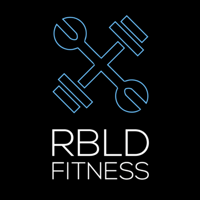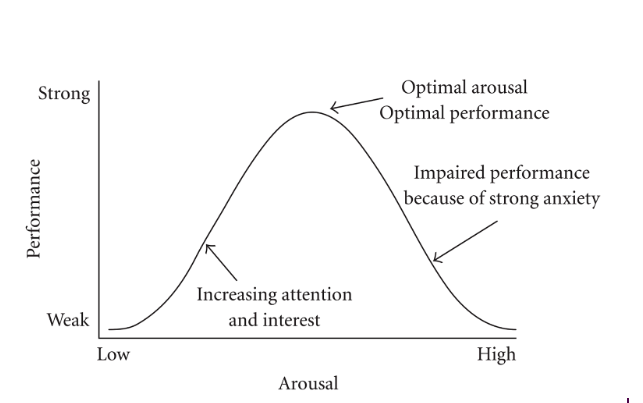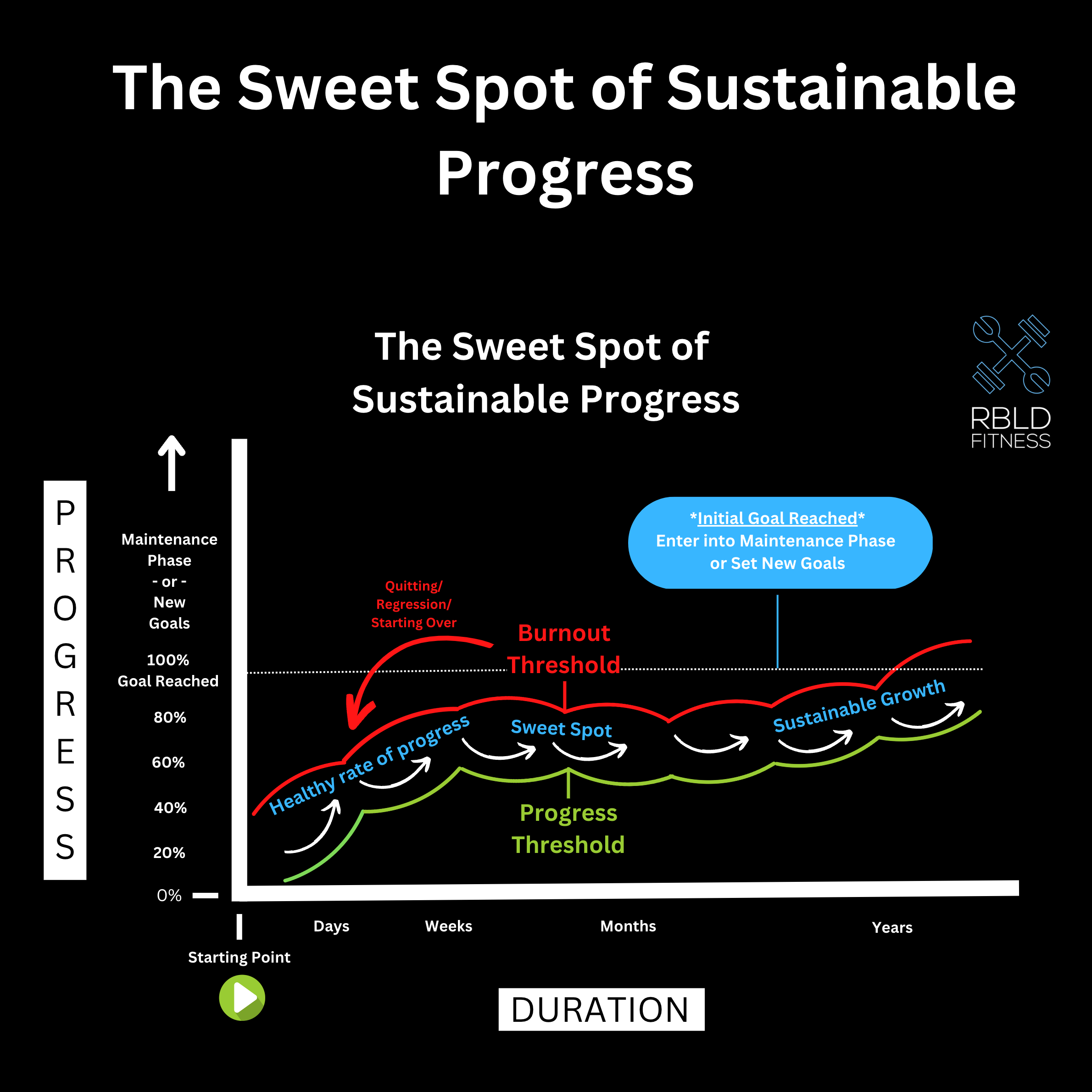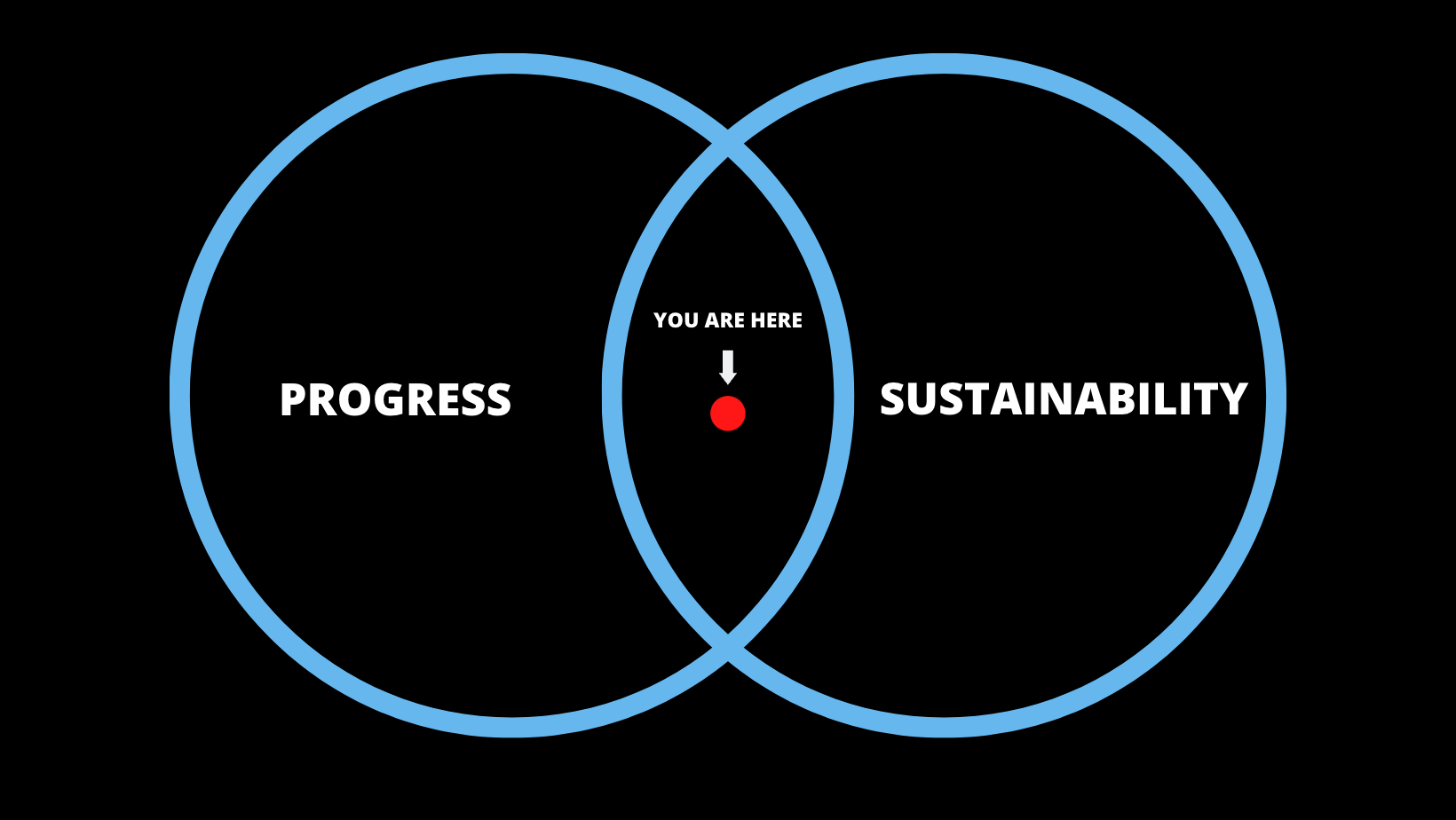Finding the Sweet Spot of Sustainable Progress
Research shows that most people who set out to lose weight are successful...initially. The problem is that about 80% of those people regain the weight they lost after 5 years. But why is that?
While it depends on the individual, it generally comes down to two fundamental issues:
- The physical changes which come from metabolic adaptation.
- An imbalance between speed of progress and living a sustainable lifestyle.
The truth is that you need both to see long-term success. After all, progress is only valuable if you can sustain it. And sustainability is only valuable if it generates results or at least maintains a status quo that we can be happy with.
Go too hard, and you risk burning out. Go too light, and you never get off the ground.
For years, I wasn't seeing the results I wanted in my personal fitness journey, and I finally realized that my primary issues were a lack of basic education on exercise science and nutrition, as well as my inability to strike a balance between progress and sustainability. The outcome was a lot of work, burnout, and frustration with little results to show for it.
After tons of research on the subjects of fat loss, muscle growth habit science and behavior change, followed by some brutally honest reflection on my ignorance and short-sightedness, I was finally able to find my personal "Sweet Spot of Progress and Sustainability".
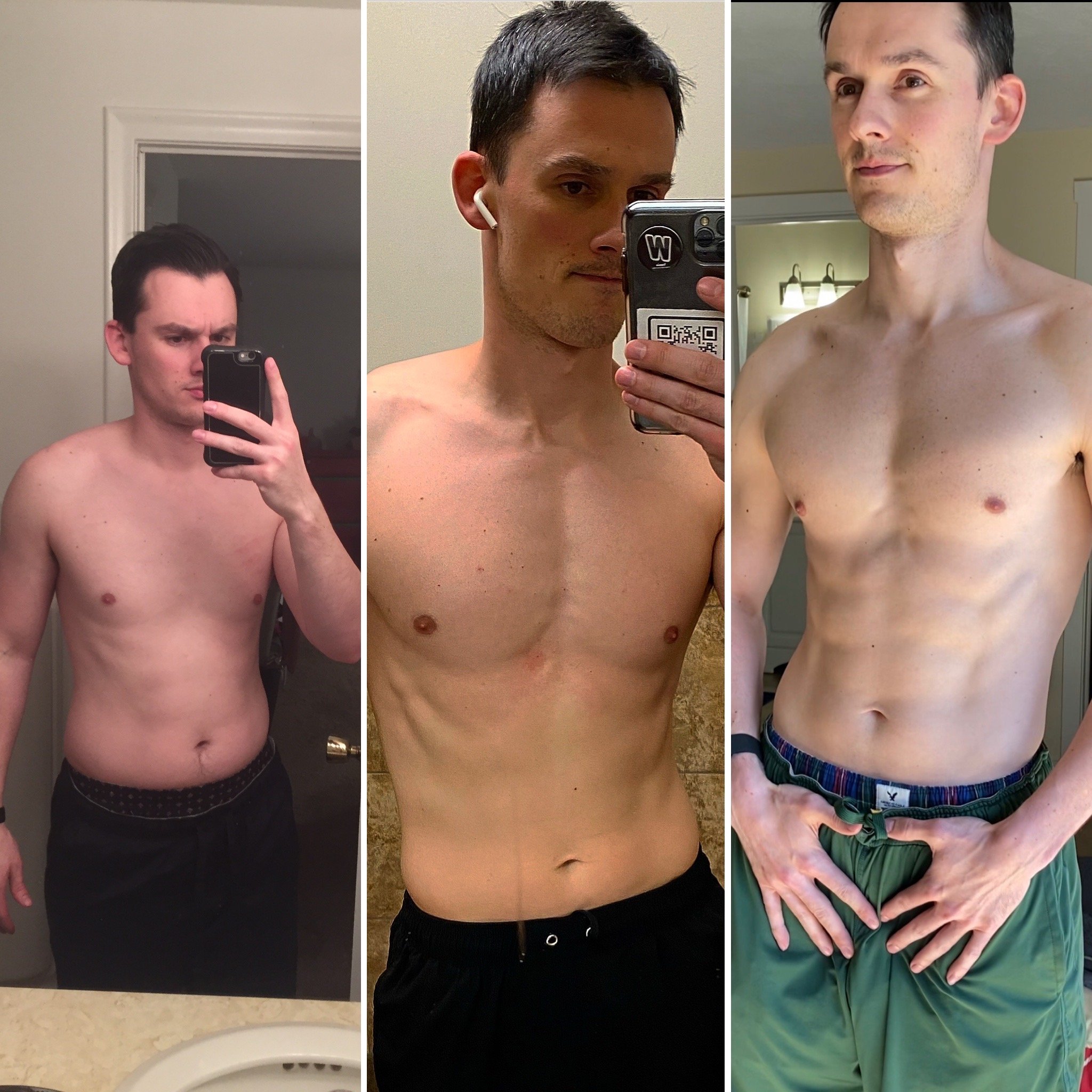
The results speak for themselves.
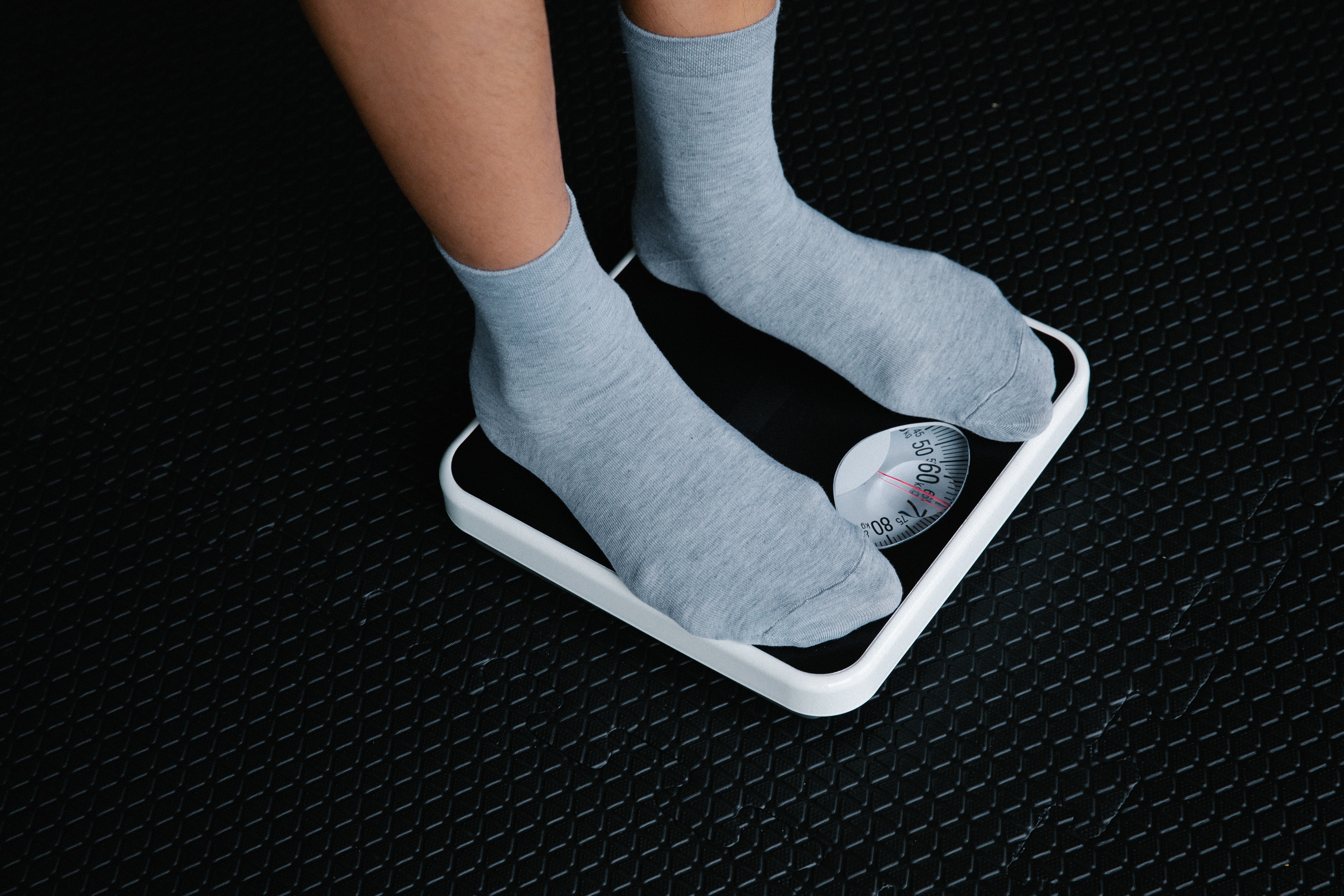
Factors Contributing to Failure
For the sake of brevity, I will limit this section to just a few of what I believe are the primary factors that contribute to the failure of living a sustainable fitness-forward lifestyle.
Problem # 1: Metabolic Adaptation (Physical)
Our bodies are adaptable to all kinds of difficulties we put them through, and that is usually a great thing! Sometimes, however, like in the case of trying to lose weight and keeping it off, this can happen as a result of our body’s attempt to protect itself from starvation. During diets, and especially after yo-yo dieting once or twice (or 5+ times), the body goes into what is often referred to as “Self-defense mode" to protect itself from starvation.
Leptin - the hormone that tells your brain “You have enough fat stored in your body, so you can use that fat as energy to burn” - decreases. When the hormone telling your brain “relax, and be normal” is suppressed, you tend to feel more hungry even when you’re actually not needing food at that moment. Then your body often responds by storing that food you consume as fat more easily.
Fat cells may also replicate and increase in size, making them more likely to capture and store the calories you put into your body as fat.
In short, your body slows down the process of burning fat, and it holds onto the calories you put into your body more desperately. After all, it basically thinks you’re not going to eat again for a while, and you need to keep all the fat you have to survive as long as possible.
Our brains haven't evolved much in that area in the last 10,000-15,000 years. This was helpful for most of human history, but in our modern first-world context where there is more high-calorie food options than we can handle, it can be a bit of a nuisance to say the least.
Arguably the best and most obvious way to combat the physical ramifications that come from yo-yo dieting is to find and establish a sustainable lifestyle of dieting and exercise now.
Problem # 2: Having No Plan AFTER We Achieve a Weight Loss Goal
Let's say you set out to lose 25 lbs, and you did it! Great job!
But what will your diet look like now? How about exercise? What are your plans going forward to keep the results you've achieved?
While many diet programs are incredibly effective in helping people achieve short-term goals like losing weight and adding muscle, they are also sustainable only for...you guessed it...the short-term. Like a drug that provides a quick, potent high, many diets don't last, resulting in weight regain and a cycle of dependency on those same quick-hitting diets just to get us back to our original starting point.
Very few programs (unlike ours, of course) have a contingency plan for you to maintain and even build on your initial success. Without that contingency plan, this leaves most people feeling lost and/or burnt out. After all, the program they followed was designed for rapid progress, not long-term progress or sustainability.
The mindset and actions required going into achieving rapid success will naturally be more restrictive and less enjoyable than a program designed for slow and steady results. This, by itself, is not the problem. It's not knowing what to do afterwards, and it's not having the right post-diet mindset.
Problem # 3: Not Having the Right Post-Diet Mindset
For a more in-depth reflection on this topic, check out an article I wrote called "5 Thoughts for Building a Fitness-Oriented Mindset".
The basic premise is that it's imperative for us to mentally prepare for what is happening now and what is to come later in our fitness and wellness journeys. It's encouraging to know that most people who set out to lose a modest amount weight (about 10%) are successful in doing so, but we also know that roughly 4 out of 5 of those people will regain it back within 5 years.
I've noticed two main themes things from the population of people who go through this weight change journey:
- Most people seem to have the capacity to change their minds and actions to achieve short-term goals.
- Roughly 80% of those people don't have the knowledge, mindset and/or sustainable diet and fitness plans to follow for the years that come after (AKA the rest of their life). The good news, however, is that about 20% of the people from that same group do have those things
- To learn more about those habits, check out this incredible research study of the habits of the most successful long-term dieters).
- To learn more about those habits, check out this incredible research study of the habits of the most successful long-term dieters).
The bottom line is that you can't go into a diet thinking that you're going to make changes temporarily, see some progress, then eventually get to revert back to the way you used to live without repercussions.
Nothing important in life works that way. Not our careers, our relationships, our finances, etc. So why would this be different?
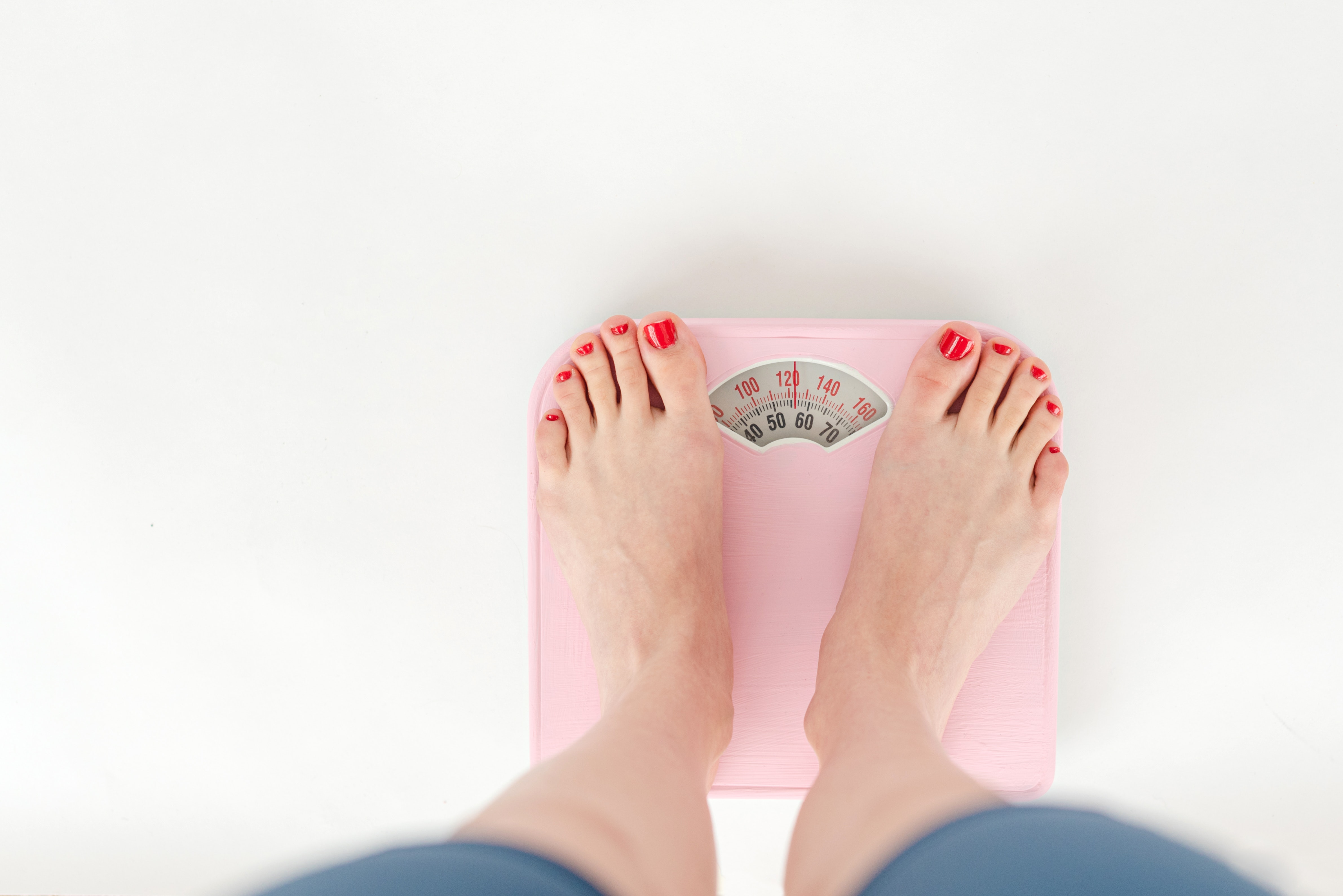
This is How Weight Regain Often Happens
Let's play this out in numerical terms:
- Let's say a 35-year old male, 5'9" tall who weighs 235 lbs and works out roughly 2 days per week requires about 2,378 calories per day to maintain that bodyweight.
- If that same person with the same level of activity lost 35 lbs and now weighed 200 lbs, his body would then require about 2,520 calories per day.
- That's only a difference of 142 calories, which isn't much by itself.
- That's one handful of nuts
- One soda bottle
- One small bag of classic potato chips
- One cup of chocolate milk
- One small coffee with cream and syrup
- The list goes on...
- A surplus of 142 calories one day is negligible. Yet, if he kept all activities in his life the same and he were to consume an average caloric surplus of 142 calories per day for about 25 days, the math suggests that he would gain about 1 lb of fat in that time.
- Again, that's not a lot by itself, but over the course of one year, that comes out to 15 lbs.
- Multiply 15 lbs per year by the number of years he lives the same way, and early into the third year, he will have regained all of the weight he lost and then some.
This is the more common example of how weight gain and regain happens. It's not intentional, it's accidental. It's usually not fast, it's gradual. And unfortunately, it's not difficult. In fact, it's all too easy.
Two of the best ways to combat this outcome is to embrace the mentality that your diet and exercise will always be something you think about in your daily actions. Additionally, understanding how how energy balance works in relation to your physical makeup is crucial if you hope to make informed decisions regarding the management of your weight for years to come.
Now, let's get to the meat and potatoes of this article.
Yerkes-Dodson Law
The Yerkes–Dodson law is an empirical relationship between pressure and performance, originally developed by psychologists Robert M. Yerkes and John Dillingham Dodson in 1908. The law dictates that performance increases with physiological or mental arousal, but only up to a point. When levels of arousal become too high, performance decreases.
Much like how the Yerkes-Dodson Law shows the bell curve of our performance peaking between levels of stress that are just high enough to motivate us to move but not too high that our performance is impaired or halted, finding "The Sweet Spot of Sustainable Progress" posits the idea of two principles that simultaneously hold one another in check and fuel continuous growth without end - Progress and Burnout.
The Sweet Spot of Sustainable Progress (SSSP)
This is my visual representation of what I believe to be the most fulfilling and healthy way to pursue your fitness goals (as well as goals outside of fitness). The #1 objective here is to find a lifestyle of behaviors that fit in "The Sweet Spot" - which is a zone of daily activity where you're doing enough to progress towards your goals, but you never do so much that you burn out, quit or regress.
By staying in this "Sweet Spot", you can virtually guarantee consistent progress, albeit at varying paces at different times in your life. Whether fast or slow, any pace of consistent progress is infinitely better than not progressing or worst of all, regressing due to burnout.
Reading the Chart (Above)
- Y-Axis (PROGRESS): This is the percentage of progress you make towards your set goal (i.e. lose 25 lbs of fat and gain 3 lbs of muscle mass). Once you reach your goal, you essentially have three choices:
- Enter a "maintenance phase" to keep things the same
- Choose new goals to work toward
- Quit/backslide
- X-Axis (DURATION): This is the duration of time you stay within the "Sweet Spot" of progressing towards your goals. You'll notice that the trend upward is conservative and likely to have many peaks and valleys as time goes on, but that is life. Staying in the zone relative to your life's circumstances during that season is key to sustainability for months and years.
- Progress Threshold: This is the subjective threshold of activity you must complete in order to get closer to achieving your goal (i.e. Goal: Lose 25lbs | Activities: Achieve a calorie deficit + regularly exercise). Do enough of these things, and you'll progress. Do too little, and you will either maintain status quo or regress from your goals event further. You want to stay above this line, but below the "Burnout Threshold."
- Burnout Threshold: This is the subjective threshold of activity that is too much for you to handle personally and at that particular time. While that activity may help you speed up progress in the short-term, once you "burnout" from doing too much, you run the danger of quitting, regressing and/or starting over completely. We've all been there before, so you'll want to stay below this line, but above the "Progress Threshold."
- The Sweet Spot: This is the subjective zone of daily actions that enable you to consistently progress towards your goals without burning out, quitting, or having to start over from scratch. It's very important to note:
- There is a lot of space between doing enough to progress and doing too much that you want to quit. Don't be too rigid on yourself regarding what progress is "supposed to" look like.
- Having a bad day or week doesn't mean you've failed and have to start over completely. (i.e. Losing 10 of the 25 lbs goal, then regaining 3 lbs is still a 7 lbs net difference. Don't quit because you regressed a tiny bit. You can re-enter the sweet spot of sustainable progress at any time.
Example of The Sweet Spot of Sustainable Progress (SSSP)
- YOUR GOAL is to lose 25 lbs of fat and gain 3 lbs of muscle in 6 months.
- TO PROGRESS you need to be in a consistent calorie deficit, consume an adequate amount of protein and regularly overload your muscles via resistance training or something similar.
- A MANAGEABLE PACE AND APPROACH might be to follow a flexible diet, achieve a daily average of a 500 calorie deficit, and complete 3 to 5 days of resistance training and cardio per week. Moderate pace, but low chance of burnout.
- AN UNMANAGEABLE PACE AND APPROACH might be to follow a highly restrictive and minimal calorie diet, and complete 5 to 6 days of 90-minute workouts per week. Fast pace, but higher chance of burnout.
- AN ALTERNATIVE APPROACH might look like following a more restrictive and aggressive diet and exercise plan for 30-60 days to see quick results, followed by a slower and more flexible plan afterwards. Fast pace at first, then more moderate pace after. Takes advantage of high motivation periods at the start of diet/exercise programs, but allows you to settle into a manageable, yet still progressive routine.
A Note About Flexibility:
Depending on the person, any of the examples above might be too fast or too slow of a pace for them.
I'm speaking from the vantage point of what I've experienced for myself and observed from my clients. Most of us like balance and flexibility, but some thrive on ultra-restrictive and structured programs for long periods of time.
You can progress while being anywhere on this spectrum as long as you know who you are, what you like, and you have a plan that aligns with it. You can always make adjustments on the way, but I'd advise that you're honest with yourself from the outset.
The goal is not speed. It's to succeed by whichever means will enable you to do so.
How to Find Your Sweet Spot
If this article has convinced you that striking a balance between progress and sustainability is crucial to both getting immediate and long-term results, then the natural next question arises:
"How do we do that?
The "RBLD" Methodology
If any goal is truly worthwhile, you should have a plan that reflects how seriously you take it. The "RBLD" Fitness Methodology is a 4-step model I've designed to help you rebuild a strategy that is as unique as you and as strong as your will to live your best life.
Here are the steps.
Step One | REFLECT.
Reflect on what you truly want in your fitness journey: 1) Your outcome, 2) Your due date, and 3) The lifestyle you're willing to live throughout, and when the time comes, 4) What you'll want to do after that goal is achieved.
Be honest with yourself - "Do I really want a six pack, or do I just want a flatter stomach?" "Do I really need to look like a fitness model, or would I be happy with losing 20 lbs and keeping it off?"
Your feelings might change in the future, but it's important to define a target today. And it's OK to dream big, but not at the cost of authenticity.
Choose goals that are specific, measurable, achievable, relevant, and time-bound (S.M.A.R.T.) - this is arguably the most universally accepted guide for goal-setting.
For this reason, I like to ask my clients to describe their ideal future state. Once they do, I then ask them to describe for me the bare minimum of results they would accept. This is essentially their "zone of personal success." Once we define that very clearly, we can work towards it with intention, patience, and confidence.
Again, you must set goals that are (S.M.A.R.T.), but also, make them true to you - for today and for your future self.
Step Two | BUILD.
Build intentions and plans that aligns with your lifestyle and goals.
Implementation intention is a term coined by author and speaker James Clear. It's essentially the intention that "At a specific time and specific place, I will complete a specific action."
Example: "On Weekdays during my lunch hour, I will complete a workout from the program I'm following."
He was inspired by researchers in the UK who showed what really gets people to commit to their goals.
They had three groups of participants:
- This group was a control group who was asked to simply track their workouts
- This group also asked to track their workouts, but they were also provided content about the benefits of exercise
- This group received the same instructions and materials as the second group, but they also were required to write a plan for exercising that stated “During the next week, I will partake in at least 20 minutes of vigorous exercise on a specific DAY and TIME in a specific PLACE.”
The participants reported their activity after two weeks, and the results were as follows:
- Group 1 (Control Group): 38% of participants worked out at least once per week
- Group 2 (Motivational Content): 35% of participants worked out at least once per week
- Group 3 (Motivational Content + Implementation Intention): 91% of participants worked out at least once per week
This shows that people who combine education/motivation with implementation intentions are over 2x more likely to complete their workouts than others regardless of whether or not other people consume motivational/educational content.
This tells me that planning is as equally important as motivation, if not more so. For this reason, I created the "What, When, and Where" strategy to establish an iron-clad fitness routine - a strategy that has worked for me for over 5 years - through changes in career, finances, relationships, residence, vacations, illnesses, and more.
Here's how it goes:
WHAT
-
What exercise program will I follow?
- My own?
- My trainer's?
- An App?
-
What equipment will I use?
-
Full gym?
-
Resistance Bands?
-
Dumbbells?
-
Bodyweight Only?
-
WHEN
-
Which days of the week work best for me?
- What time of the day will I exercise?
WHERE
-
Which venue will I exercise at?
-
Gym?
-
Home?
- Outdoors?
-
Forcing yourself into following a program or diet that you hate might work for a month, but it's useless if you quit early and have no backup plan (The RBLD Fitness app provides you with workouts and plans for literally any combination above).
Answer the questions above, and research proves that you'll have 2x better chance of sticking with your workout plans.
And the same principles apply to diet. Have a physical or even mental preparation for what you're going to eat, as well as when and where you're to eat it will dramatically improve your chances for diet success.
If you fail to plan, you are planning to fail.
Step Three | LEARN.
Simply following a program or diet without understanding why it works is a huge mistake that many of us make. Learning the fundamentals of fat loss, muscle growth, nutrition, and behavior change (check out our educational articles) will carry you for months and years to come if you take a small amount of time each week to absorb it.
We retain information much more easily and permanently as we're regularly completing the activities (i.e. exercising, dieting, and changing our thinking) related to the information we're taking in.
We design our information and education here at RBLD to be simple, digestible, and usable so you can carry it with you (and perhaps even build on it).
The premise? Give a man a fish, and he eats for a day. Teach a man to fish, and he eats for a lifetime.
Step Four | DO.
What is left but to execute?
If you follow the three steps above, you'll have optimized your chances of short and long-term fitness success.
To stack the deck, however, we've compiled a large and evolving repository of evidence-based strategies to help you understand and master your immediate and long-term behavior for the better - as it related to your personal fitness and beyond (check out some of our articles on behavior change to get a head start).
Additionally, we help you navigate the natural ups and downs of any fitness journey, be it physical, mental, or emotional. Again, the goal is to help you find and stay in your personal Sweet Spot of Progress and Sustainability to prevent quitting and to promote long-term growth.
Summary
- Diets don't fail because they're ineffective. They fail because they're not sustainable for most people ,and we don't plan beyond their short duration.
- We encourage you take advantage of seasons of high motivation, high discipline and quick results, but also make sure you have a thorough contingency plan that aligns with your S.M.A.R.T. and authentic goals.
- Finding a "Sweet Spot" between doing enough to progress and doing too much that you'll burn out is the key to longevity.
- The thresholds for progress and burnout may change over time, but using them as a checks and balances system is extremely effective in establishing a lifestyle of improvement.
- The "RBLD" Fitness Methodology is an evidence-based, 4-step strategy I've designed to help you rebuild a strategy that is as unique as you and as strong as your will to live your best life.
- At any point in your fitness pursuits, ask yourself these two questions:
- Am I progressing?
- Can I sustain this?
- If the answer to both is yes, then you're in the sweet spot. If the answer to one or both is no, then make the necessary adjustments to correct that, and positive long-term effects will follow.
It's my great hope that this article has been a net positive to your life.
If you feel you could benefit from a 1:1 coaching experience, please feel free to either email me at teddy@teddywoolsey.com or book a 30-minute discovery call to discuss if my team could help you get to where you want to be.
In the meantime, be well.

Teddy Woolsey
I am the owner of the RBLD Fitness Unlimited Coaching Program and RBLD Fitness App
I also write about the intersection of fitness and sustainable behavior change
Let's connect on Instagram: @tedwoolsey
________________
